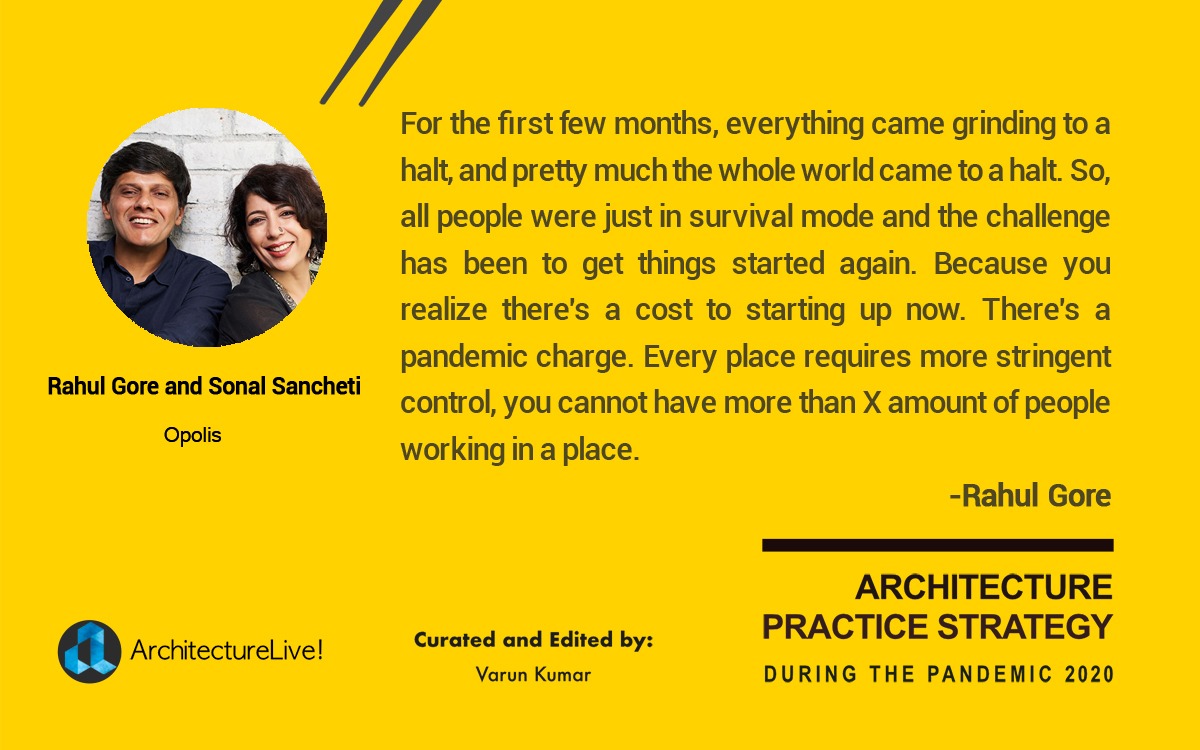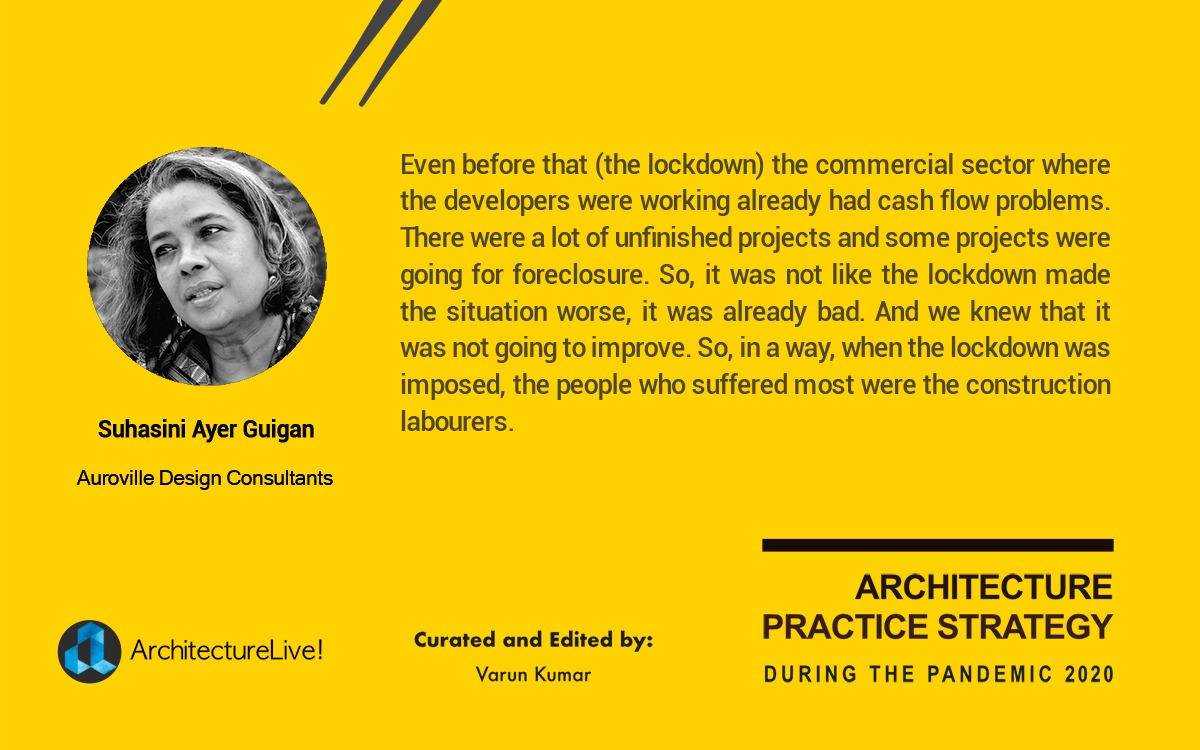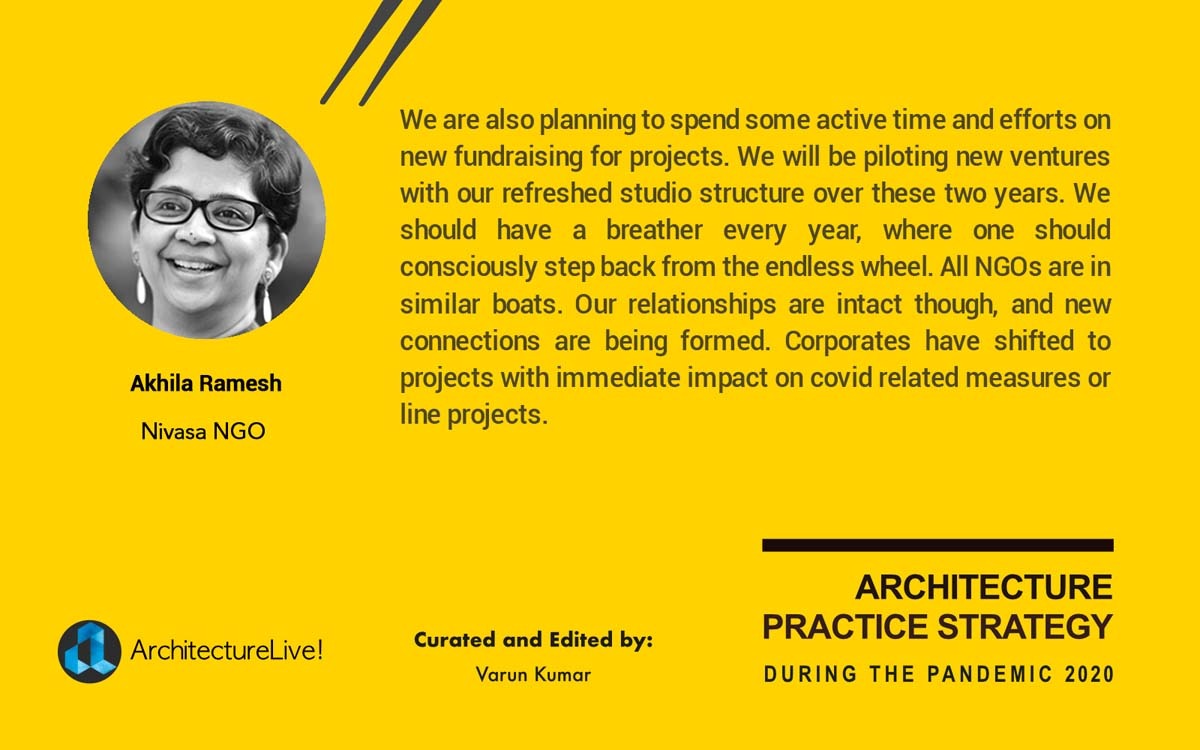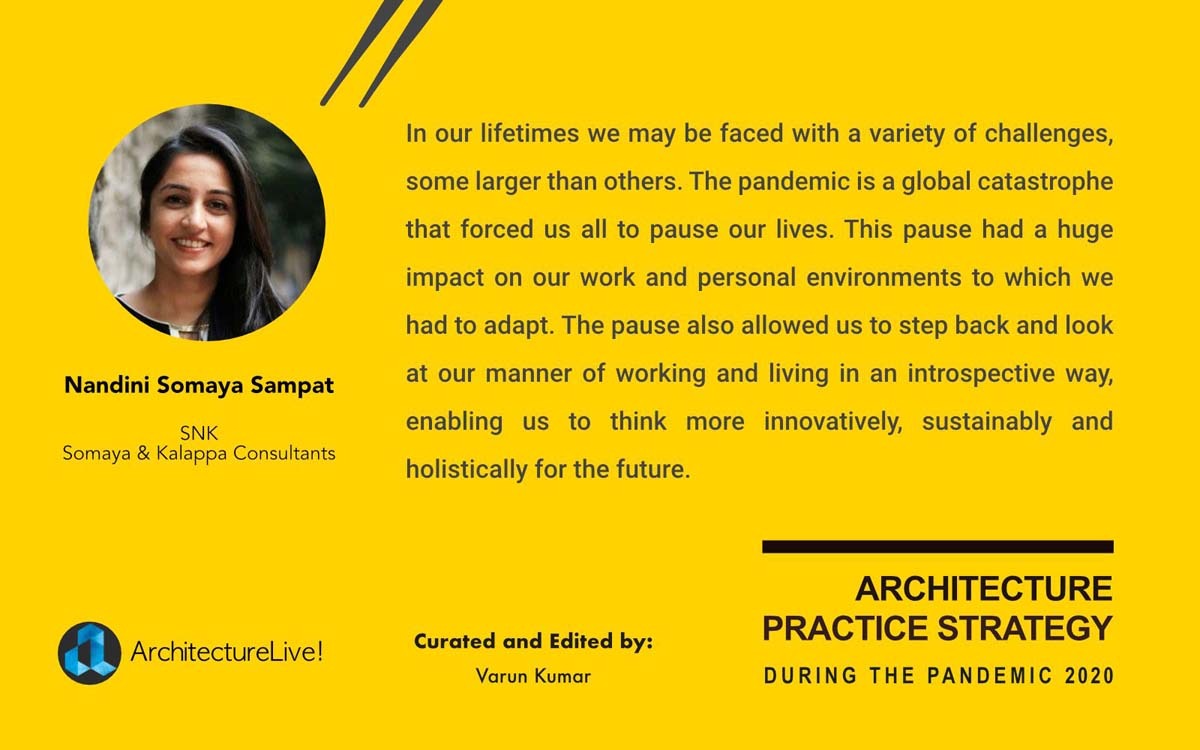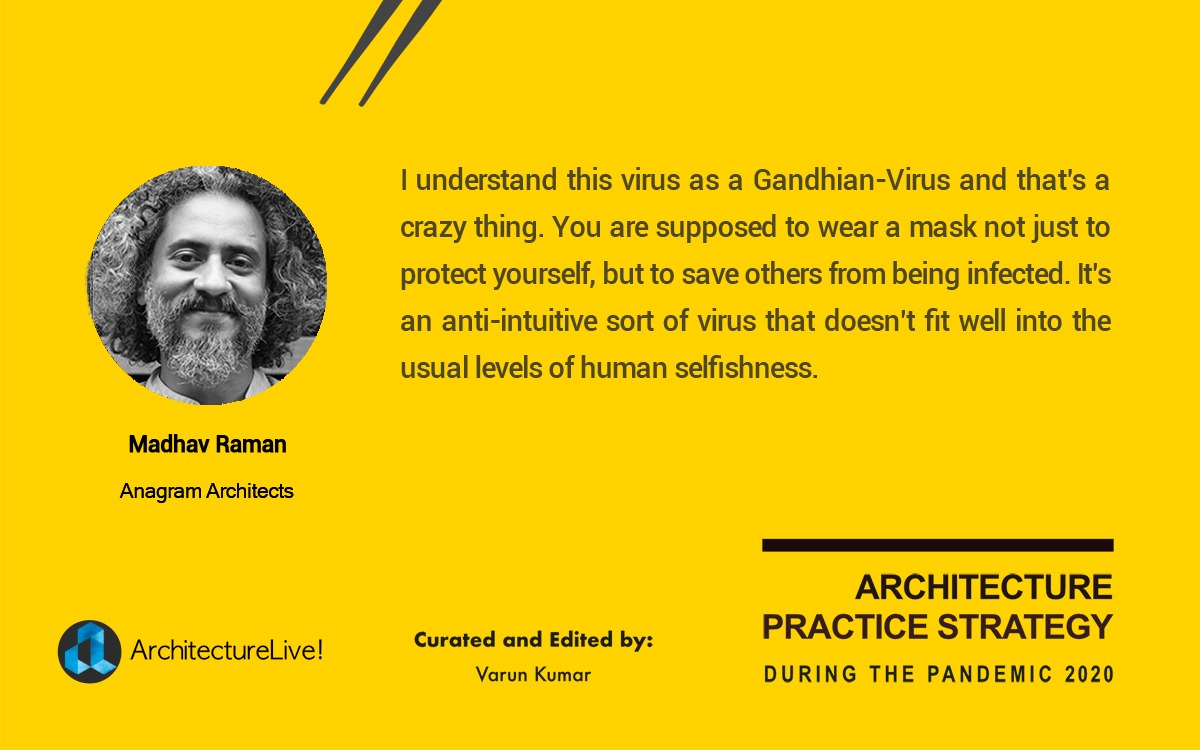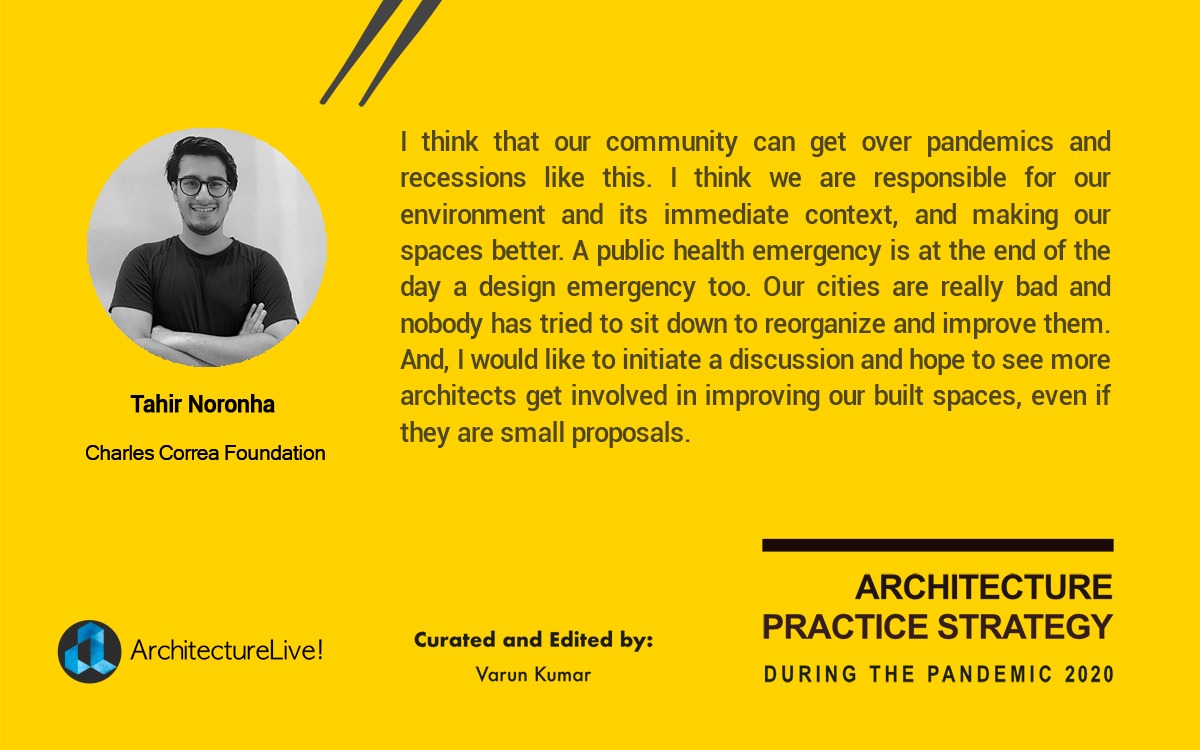Architecture in India is recognized in recent times by mass development drives, with a super-imposition of global tech-growth trends. [12][29] Pure architectural design and planning, flowing from the individual spirit are overshadowed. While automating manual labour in architecture is a helpful idea, we have over-glorified the built environment’s ‘digital twin’. It’s the accurate virtual models of our built assets that superimpose well on realities [29] making our dreams vividly seen. Architecture in India is also marked by the disintegrated development of India’s urban layers. Metropolises, medium cities and towns make up the urban layer, in India’s geography.
India is a commingling of primitive, rural and advanced urban settlements. In the urban layers, changing design cultures contained within the rather dysfunctional planning systems of Indian cities [28] represent the current architectural ethos. It is pulled around by multiple explorations and opportunities to savour commerce and creativity. Meanwhile, urban systems lie ineffective and non-responsive to the surrounding ecology. [28] Architecture, accompanied by urbanism in India, hence lies in flux and needs integration.[12] At the junction of the two, lies the fusion of social and general sciences with Architecture which can pave a sustainable way forward for societies. The prolonged functioning of these fields in silos leaves us vulnerable to the impacts of various crises.
The COVID-19 pandemic Lockdowns in India have exerted their share of pressures on architecture and development in India. Job losses, stoppage of practice for the budding architects and forfeiture of educational opportunities hit the profession here. Furthermore, the migrant workers’ crisis detached the most significant workforce.
The job scene when the pandemic stuck
With no certified official positions, the structure of India’s architectural workforce generally forms according to the design-build traits and capacities of individuals. Architectural positions exist in governmental, social and private sectors, all of which include pedagogical, research and practical work. The different types of architectural firms in India exist in cohesion with this structure.
The job scene here is generally characterized by overwork for lesser pay-scales. Lack of work-ethics, absence of good leadership, poor skill and interpersonal development with the graduating crowd makes for a decadent work-culture. The governmental positions for architects, however, promise pay scales and career paths invulnerable to external forces, provided that incapacity and political frustration doesn’t get the better of them. We can rightly observe in big numbers cyclical and frictional unemployment in the profession. Cyclical, where architects seek higher-paid teaching jobs. Frictional, where long-term recessionary trends and poor skill levels in our profession force lay-offs.
Around 139 million migrant workers exist in India[37] of which 14.6 million are in the construction and development industry, men and women included. [34] The real estate sector contributed 9% of the country’s GDP in the financial year of 2019-2020.[20] Since the 2001 national census, the sector has witnessed activity growth, which may sound ironic to the recessionary trends of architecture practice. However, a significant portion of India’s informal labour represents the construction industry. The migrant workers’ plights dawned at the lockdown announcement as one among the pandemic stimulated crises. As they were left stranded without work, pay, food and shelter, the migrant workers were impoverished more and began migrating back home.
This sparked the reverse migration trends during the lockdown, including the return of formal workforces from urban life to the native towns and villages. This phenomenon also spurred state government initiatives to create jobs for the returning population, as moving away from the urban work atmosphere may increase poverty.[31] We also understand that avoiding being locked down away from home was the real reason behind the reversals. Many architectural studios had to send employees back to their hometowns quickly. These send-offs eventually forced lay-offs too, as a return to office and salaries weren’t assured.
Practice in Metropolitan India
Metropolitan India functions as economies of agglomerations. [42] Architecture Practice of the metros hence evolved, alongside other sectors, in urban agglomerations. The growth of agglomerations stems from the need for socio-economic advancement. Eventually, Indian metros became large-scale market spaces for various professions to bloom, building their wealth and brands. Architecture too, over more than the last half-a-century has developed into networks of firms, clientele and manpower to evolve in creative practice.
These urban centres function in isolation from the architectural practice trends, the larger society and its environment. Their development authorities are perhaps saddled with colonial systems of urban governance and do not respond to the volatile nature of cities in India. Planning is complained to be too deterministic for contemporary city conditions. it tries to predict urban demands, while it should be capable of hosting and negotiating with unpredictable developments. Cumbersome in-office procedures also impede a development plan’s implementation. [28]
Urban India parallelly possesses a variety of architectural practice scales and types. We can observe that Architecture practice in Indian metros exist in multiple verticals, of which commercial and pedagogical are most vibrant. Categorizing studios in commercial domains according to typology and age becomes complex. However, we viewed practices in metropolises from an informal lens. We formed a sample size with thirty-one studios, who’re collectively diverse in their practices.
The participants are from Ahmedabad, Bengaluru, Chennai, Gurugram, Kolkata, Mumbai and New Delhi, accompanied by Auroville and Panaji. Some participants have further engaged in creative, social and pedagogical initiatives as their allied work. Many urban and rural Indian pockets are rich with history and emerging practices, covering all of which was a far cry in this pilot study. The metros, however, tell us succinctly about many of India’s forerunning practices.
We observed how internal and on-site work processes were influenced by the lockdown. This enlightened us on how the different facets of architecture practice were affected. With an informal model of discussion, we unearthed insightful thoughts about market trends and the virus outbreak itself. Architects further shared their personal and professional learnings from the pandemic, which makes the most significant learning from our inquiry.
Characteristics of a post-pandemic resumption
The pandemic lockdowns in India were imposed in a ‘severe’ followed by ‘unlocking’ phases. The severe phase was from March 24th 2020 to June 31st 2020, which later eased out. All Indian businesses were imposed with reduced cash flow and steep consumer demand reductions, during the lockdown. All commodity and material supply systems were disrupted and manufacturing units were closed. Around 71.31% of businesses across various sectors, inclusive of education and retail faced these issues.[18]
Collectively, all businesses are now functioning with a low-cost policy as the long-term’s mantra. It has been speculated that up to 18 months from September 2020 is needed for businesses to return to their pre-pandemic scale of operations nationally. Most businesses also allude that consumer purchases will continue to focus only on essentials for a long while now.[18]
India needs substitution of imports while staying connected to the global chains, ensuring more advantages are drawn from them.[18] Growing dependence on global chains contributes to the fall of Indian markets during such crises. For instance, India has yet to attain self-sufficiency with the production of manufacturing machines.[15] Design and construction work in India shares a significant part of the country’s foreign clientele, therefore, a determinant of the local job security.
Alongside the farm sector, the construction industry experienced the majority of the 41 lakh job losses seen amongst Indian youth. In the architectural workforce, the younger lot of emerging studios and architects bore the brunt of the economic contraction more during the pandemic. Across most job sectors, Leave without pay, cutting down non-essential projects and deferred salary payments in place of cuts are some of the monetary support by companies for their staff.
Besides, making a sustainable work model out of the work-from-home (WFH) modes, strengthening team bonds and technology adoption to keep the workflow active are other internal measures. Renegotiation contracts with vendors and suppliers to sustain networks through the pandemic are a focus too.[5] Architecture studios made similar measures to deal with the attrition during the lockdowns. It was also important to learn and equip new skills through the lockdowns, as another void time to learn may not arise.[21]
After September 2020 some architecture studios became active. Without a vaccine last year, infection and death rates were reducing and many sectors began operations. Herd immunity was growing and pre-pandemic routines were returning. However, each studio’s resumption pace has varied. Some studios also required re-envisioning of practice models.
The COVID-19 crisis tied us up into a social void and it wasn’t easy to pre-empt the situation with heightened uncertainties. Everyone’s roots were tested certainly and sticking together as a studio was challenging. A large recess, shelving of projects and suspension of practice without assured reopening dates and health risks forced the studio teams to stay put. Many studios have re-imagined their practice ethos, approach and philosophy. The physical connection between various channels of practice was disrupted. The collective efforts of studios were divided, leaving teams in isolated silos of work.
Starting-up from such a lull has physical and monetary costs.[27] Studios have to re-connect their professional dots with new safety concerns. However, a new tech-enabled efficiency is equipped for resumption. The work culture in which architects are bred is the opposite,[38] but we witness assimilation nevertheless. New fundraising channels, diversified revenue generation and practice models may become the norm. [26][25][3][10]
Market influences and pre-empting the pandemic
The design and development market has been grim, well ahead of the virus outbreak.[15] As core projects were being stalled, it encouraged studios to broaden their body of work with research, new revenue ideas and inter-studio collaborations. However, the number of villas and farmhouse projects continued their increase during the lockdown. [32][9] There are relatively fewer inquiries for work-spaces owing to distancing measures.[27] Home-living trends too were modified, demanding innovative and complex home ideas. [32][21]
Unhampered commercial routines in the industry were usually seen with development and realty companies, as they were able to generate projects and workforce. Otherwise, the industry is claimed to be inefficient and dishonest, causing a dullening of cash flow.[15] This also clouds the careers of straightforward practice. Parallelly, as the government was the only spending player, collaboration with authorities was encouraged. [27][32] In many ways, the lockdown wasn’t a fresh disaster as studios had already been thriving in lulls before.[15]
The pandemic’s implications on society and the economy were predicted by a few studios. Some studios were well-placed financially and experienced the lockdown only as a pause. [27][9][21] Some anticipatory steps by studios were cost-cutting measures [35][1][41][32] site safety for labourers,[35] contingency funds [36] [1] [41] and full salary flow to the non-architectural staff. [32][35][1][24]
Pandemic’s influence on monetary flow, team structure and performance
The lockdowns had detached the links that maintain the cash flow balance of a studio. Amongst the NGOs, we witnessed how their primary fundraising channels were drained or closed-down. In this sample, Nivasa NGO,[25] Charles Correa Foundation (CCF)[26] and Hatch Workshop[16] were the participants who function with project funding partners. Loss of funds for the funding partners couldn’t be worked around. Meanwhile, ideas like competitions and newsletters were the alternative to revenue channels.[26] As physical operations became scarce, digital marketing was another option explored to garner commissions in the virtual space. [36] [10] [3]
Amidst the job losses and the reverse migrations, some studio-teams did stick together to see through the situation. The importance of conservative team sizes has been re-asserted by many in this sample size, as learning from the pandemic. Retention of on-site teams too was crucial for a post-pandemic resumption. Eventually, as the lockdown conditions were easing out, the turnaround of staff, old and new, was seen to refill some studios. In the meanwhile, teams have worked independently of the physical centrality that was the studio. [32]
Team performances were also impacted by the pandemic situation. A drop in team morale [27][21] and increased anxiety was the psychological burden [14] faced by studio members, which had to be attended to. Interventions such as research work, virtual data sharing and presentations within studio-staff, [27] team-building activities and play-spaces in the studio [14] were made to reduce the stress. Team members have been claimed to overcome their hesitations and stay efficient while working from home during the lockdown, appreciably so. [19][6][11][13] Besides, working remotely has forcefully reorganised the work-flow patterns in many studios. While remote work has been claimed to enforce more communicative discipline,[15] it also delays tasks that otherwise complete in minutes. [32] It is also important to note that this enforced isolation has, however, pushed many to develop longer attention spans. [15]
Strategizing new work methods
The adoption of virtual work formats turned out to expedite tasks such as meetings and coordination, which were otherwise typically cumbersome in metropolises.[15][21][3][7] WFH with virtual platforms only helps as a tool for a niche of tasks in architecture practice. [24] [21] It’s inevitable to be physically present for both in-studio and on-site work. [24] [15][9] [32] On the contrary, the proliferating residual work, travel time for meetings and petty on-site issues were seen to be effectively completed with virtual coordination. This way, the lockdown has unearthed a wealth of digital knowledge.[11]
Virtual work formats were only re-surfacing into better light and weren’t new to the profession. We observed that some studios were founded with virtual work methods as one of their fundamental tools. Sites abroad were monitored from India, [13] while we generally assert the inevitability of physical visits. Foreign candidates have joined on a WFH basis from places like Argentina, the Middle-East and Europe to expand some studio teams during the lockdown.[3][13][41]
Perhaps the most surprising learning about digital work was how it enabled principals to untie themselves from their studios. Several studio tasks were coordinated from afar, highlighting that being grounded in the office wasn’t necessary. [21] [32] This also eased the pressure on women who have additional concerns like family commitments and public safety.[15][21]
The re-emergence with fresh perspectives
A yield point is always reached where people’s general re-assertion is to live and work minimally. This notion seeps into all aspects of work and life. A moment of introspection and re-learning arises. The pandemic has given a pause for many to step back and rethink. Besides practice and revenue ideas, everyone’s routines were reimagined. It was a chance to look towards parts of social life and family, which were rather swallowed by occupation. The lockdowns helped many to pause and breathe. Stepping out of the endless work cycles periodically to rejuvenate and re-envision is felt needed more. [36][25][15][22]
The lockdowns were indeed a transitioning phase towards re-emergence. A forced prioritization of environmental and human stability will accompany the widened knowledge that studios re-enter practice with. Another such lockdown isn’t affordable[9] and it shifts the focus, therefore, on systemic stability. A healthy routine in place of happy sustenance,[23] is the visible solution.
The pandemic has taught that studios need stronger values. The post-pandemic world will test a studio’s resilience and team-strength, and show its revenue diversity. As a health emergency, the pandemic has invoked altruism and raised inquisitiveness for understanding systemic glitches in our built and natural environments. The scale of this pandemic’s impacts has provided pre-requisites for studios, should there be a new societal crisis. Higher sensitivity towards people and the environment [39][22] will take precedence. The architectural firm and its practice will be believed as strung into the network of public commons now more than ever. Perhaps, the horse-eye-covers to savouring commercial work will be forced open.
The pandemic is but an amplified crisis amongst the series of planetary threats we’ve witnessed across recent decades. Present fashion of life with proliferating purchases and sinking into the make-believe spells of imitative consumerism [15] blinds us to the worsening metropolitan life-cycle. “We are hurtling down the path of death on the face of the planet’s destruction”, in Madhav Raman’s words. [32] Our questionable consumption patterns are now under more spotlights.[1]
The direction in which architectural practice is headed, at least in metropolitan India, needs a philosophical shift. A re-emergence is assured in many ways, with or without pandemic casualties. But it will certainly be more beneficial if the design community pays heed to the decadent ways of life, signalled everywhere. “We are witnessing the death of the city, before the citizens”, says Madhav Raman. [32] There are morbidities associated with the city life, how many ever versions it may exist in. Unassured health and human welfare, growing psychological problems and family issues are constant plights of cities. [32] We should rather preach methods that intersect Indian needs of the 21st Century with the flourishing technological and creative worlds. The first focus can be the application of communication and anticipatory potential to better face India’s ecological and economic crises, which are annual problems. [32]
In place of cities, urban villages are a better choice of apparel for India. Architects are encouraged to engage more with the environment. The COVID-19 pandemic may also hold its roots in environmental and social glitches. “A health emergency is at the end of the day a design emergency”, says Tahir Noronha of Charles Correa Foundation.[26] Generating change-making efforts with the urban authorities has been a tedious task, however, good ideas are never ignored. Accordingly, the architecture community possesses the potential to push urban changemakers to develop greater built environment strength. [26]
Bibliography
[1]Aakruti Architects. “Architecture Practice Strategy During The Pandemic 2020.” Financial prudence and savings to keep the salary flow active, ArchitectureLive!, Tuesday, 2nd February 2021, https://architecture.live/pandemic-aakruti/.
[2]Aanai Studio. “Architecture Practice Strategy During The Pandemic 2020.” Learning from the digitized work efficiency during the pandemic, ArchitectureLive!, Thursday, 4th February 2021, https://architecture.live/pandemic-aanai-studio/.
[3]APLUSR Architects. “Architecture Practice Strategy During The Pandemic 2020.” Toward a diversified post-pandemic resumption, ArchitectureLive!, Thursday, 4th February 2021, https://architecture.live/pandemic-aplusr-architects/.
[4]Architecture Brio. “Architecture Practice Strategy During The Pandemic 2020.”
[5]Aron, Sonica. Here’s how companies are dealing with attrition rates this year, People Matters, Sunday 10th May 2020, https://www.peoplematters.in/article/talent-management/heres-how-companies-are-dealing-with-attrition-rates-this-year-25610.
[6]Art and Architecture. “Architecture Practice Strategy During The Pandemic 2020.” Spirited with the basics, ArchitectureLive!, Thursday, 4th February 2021, https://architecture.live/pandemic-art-and-architecture/.
[7]Arya Architects. “Architecture Practice Strategy During The Pandemic 2020.” Creating an institutional set up to collaborate with individuals, ArchitectureLive!, Thursday, 11th February 2021, https://architecture.live/pandemic-arya-architects/.
[8]banduksmithstudio. “Architecture Practice Strategy During The Pandemic 2020.” Towards increased flexibility in practice, ArchitectureLive!, Tuesday, 23rd February 2021, https://architecture.live/pandemic-banduksmithstudio/.
[9]Chaudhuri, Abin. “Architecture Practice Strategy During The Pandemic 2020.”
[10]Compartment S4. “Architecture Practice Strategy During The Pandemic 2020.” Equipping a virtual workflow and a new magazine, ArchitectureLive!, Thursday, 4th March 2021, https://architecture.live/pandemic-compartment-s4/.
[11]A Design Co. (ADC). “Architecture Practice Strategy During The Pandemic 2020.” A checkpoint towards a more comprehensive growth, ArchitectureLive!, Saturday, 6th March 2021, https://architecture.live/pandemic-a-design-co-adc/.
[12]Dutta, Apurva Bose. The Changing Culture of Architecture in Modern India, Achinect, Sunday 18th February 2018, https://archinect.com/features/article/150048645/the-changing-culture-of-architecture-in-modern-india.
[13]Fatima, Takbir. “Architecture Practice Strategy During The Pandemic 2020.” Nurturing a technological and Socially relevant practice through the pandemic, Tuesday, 2nd February 2021, https://architecture.live/pandemic-design-aware/.
[14]Funktion Design. “Architecture Practice Strategy During The Pandemic 2020.” Team spirit and resilient work processes are a necessity, ArchitectureLive!, Friday, 5th March 2021, https://architecture.live/pandemic-funktion-design/.
[15]Guigan, Suhasini Ayer. “Architecture Practice Strategy During The Pandemic 2020.” A glimpse into architecture and its allied industries in India during the pandemic, ArchitectureLive!, Wednesday, 17th February 2021, https://architecture.live/pandamic-suhasini-ayer-guigan-avdc/.
[16]Hatch Workshop. “Architecture Practice Strategy During The Pandemic 2020.” Initiatives for migrant workers hindered, ArchitectureLive!, Saturday, 6th March 2021, https://architecture.live/pandemic-hatch-workshop/.
[17]ILO and ADB. 41 lakh youth lose jobs in India due to COVID-19 pandemic: ILO-ADB report, Economic Times, Tuesday 18th August 2020, https://economictimes.indiatimes.com/news/economy/indicators/41-lakh-youth-lose-jobs-in-india-due-to-covid-19-pandemic-ilo-adb-report/articleshow/77613218.cms.
[18]Kapoor, Amit, et al. How have Indian businesses been impacted during and after the lockdown?, Economic Times, Monday 20th September 2020, https://economictimes.indiatimes.com/news/economy/indicators/how-have-indian-businesses-been-impacted-during-and-after-the-lockdown/articleshow/78382728.cms.
[19]Ketham’s Atelier. “Architecture Practice Strategy During The Pandemic 2020.” Sustaining with core research and social opportunities, ArchitectureLive!, Friday, 5th March 2021, https://architecture.live/pandemic-kethams-atelier/.
[20]Kumar, Nitin. GDP of India 2020 cannot return to 9% with real estate sector still struggling, Square Yards, Saturday 31 October 2020, https://www.squareyards.com/blog/gdp-of-india-2020-cannot-return-to-9-with-real-estate-sector-still-struggling#:~:text=Taking%20India%20GDP%202019%20and%20real%20estate%20GDP,rate%20if%20the%20real%20estate%20sector%20continues%20struggling.
[21]Mobile Offices (MO-OF). “Architecture Practice Strategy During The Pandemic 2020.”
[22]Morphemy Architects. “Agility at practice and responsiveness toward our environment.” ArchitectureLive!, https://architecture.live/pandemic-morphemy/.
[23]MYVN Architecture. “Architecture Practice Strategy During The Pandemic 2020.” Understanding the workforce’s health concerns, ArchitectureLive!, Saturday, 6th March 2021, https://architecture.live/pandemic-myvn-architecture/.
[24]Neeta Shubhrajit Das Associates. “Architecture Practice Strategy During The Pandemic 2020.” The unsuitability of remote working for architecture practice, ArchitectureLive!, Saturday, 6th March 2021, https://architecture.live/pandemic-neeta-das-shubhrajit-das/.
[25]Nivasa NGO. “Architecture Practice Strategy During The Pandemic 2020.” Additional fundraising challenges and refreshed social goals, ArchitectureLive!, Friday, 5th March 2021, https://architecture.live/pandemic-nivasa-ngo/.
[26]Noronha, Tahir, and Charles Correa Foundation. “Architecture Practice Strategy During The Pandemic 2020.”
[27]Opolis. “Architecture Practice Strategy During The Pandemic 2020.”
[28]Patel, Bimal, and BR Balachandran. Making Planning Work, CEPT Research and Development Foundation, https://crdf.org.in/podcast/making-planning-work.
[29]Petrunia, Paul, and Alessio Grancini. Designers in Tech: How Architecture Is Unlocking the Potential of New Emerging Technologies, Archinect, Wednesday 3rd February 2021, https://archinect.com/features/article/150247812/designers-in-tech-how-architecture-is-unlocking-the-potential-of-new-emerging-technologies.
[30]PK Das and Associates. “Architecture Practice Strategy During The Pandemic 2020.” Rebooting Work Routines and Stalled Public Contributions, ArchitectureLive!, Tuesday, 2nd February 2021, https://architecture.live/pandemic-pk-das-and-associates/.
[31]Press Trust of India. “Reverse Migration” During COVID Spread Will Increase Poverty: Top Court Judge, NDTV India, Friday 5th June 2020, https://www.ndtv.com/india-news/coronavirus-news-reverse-migration-during-covid-spread-will-increase-poverty-supreme-court-nv-ramana-2240997.
[32]Raman, Madhav. “Architecture Practice Strategy During The Pandemic 2020.” When a vibrant design studio is distanced, ArchitectureLive!, Monday 15th March 2021, https://architecture.live/pandemic-anagram/.
[33]r+d studio. “Architecture Practice Strategy During The Pandemic 2020.” Rethinking practice, teaching and new collaborative initiatives, ArchitectureLive!, Thursday, 25th February 2021, https://architecture.live/pandemic-r-plus-d-studio/.
[34]Roy, Shamindra Nath, et al. “Migrants in construction work: Evaluating their welfare framework.” Centre For Policy Research, June 2017.
[35]Sampat, Nandini Somaya. “Architecture Practice Strategy During The Pandemic 2020.” Evolving through past crises and pre-empting the pandemic impacts, ArchitectureLive!, Thursday, 11th February 2021, https://architecture.live/pandemic-somaya-and-kalappa/.
[36]Shanmugam, Santhosh. “Architecture Practice Strategy During The Pandemic 2020.” Safety and good health, both physical and mental, was our priority during the pandemic, ArchitectureLive!, Tuesday, 2nd February 2021, https://architecture.live/backing-up-our-mainstream-practice-shanmugam-associates/.
[37]Sharma, Krishnavatar. India has 139 million internal migrants. They must not be forgotten, World Economic Forum, Sunday 1st October 2017, https://www.weforum.org/agenda/2017/10/india-has-139-million-internal-migrants-we-must-not-forget-them/.
[38]SQUARE. “Shifting toward effectively minimal practices.” ArchitectureLive!, Thursday, 4th February 2021, https://architecture.live/pandemic-square/.
[39]Triple O Studio. “Architecture Practice Strategy During The Pandemic 2020.” Our pursuit as a variated and connected team, Friday, 5th March 2021, https://architecture.live/pandemic-triple-o-studio/.
[40]Varun. “Architecture Practice Strategies During the Pandemic 2020.” Brief and background study, ArchitectureLive!, Friday, 8th January 2021, https://architecture.live/architecture-practice-strategies-during-the-pandemic-2020/.
[41]Verma, Sushant. “Architecture Practice Strategy During The Pandemic 2020.” Persisting with tech for an ever-changing world, ArchitectureLive!, Wednesday, 24th February 2021, https://architecture.live/persisting-with-tech-for-an-ever-changing-world-ratlab/.
[42]Haque, Ismail, and Priyank Patel. Growth of Metro Cities in India: Trends, Patterns, and Determinants, ResearchGate, July 2017, https://www.researchgate.net/publication/317616960_Growth_of_Metro_Cities_in_India_Trends_Patterns_and_Determinants.



